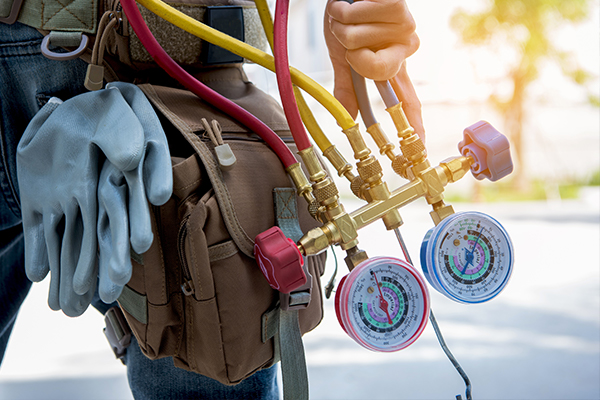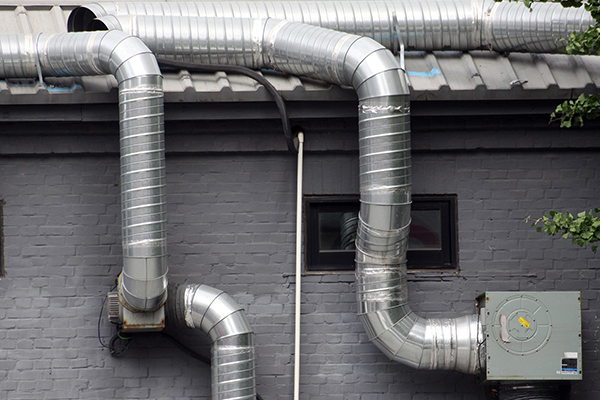
Keep leaking ductwork from driving up your heating and cooling bills. Understanding what an HVAC pressure test is and how one can help you detect and correct leakage issues will help your heating and cooling system operate more efficiently.
elearning-training.com gathered the following information about HVAC pressure tests, what they indicate and when you should have one performed.
What is an HVAC Pressure Test
Residential and commercial structures can suffer from duct leakage. In fact, duct leakage can take as much as 25% of the energy from a heating and cooling system. This is when the ductwork in a structure is no longer air-tight, allowing airflow to escape from the pipes. Duct pressure testing measures the amount of leakage in a duct system and air handler.
What Causes HVAC Duct Leaks?
An HVAC pressure test, duct pressure test, or duct leakage test checks that the ducts are properly sealed. Ducts can leak from any of the following:
- When a structure suffers a significant jolt from a falling tree
- Partial or total roof failure
- Earthquake
- Age or corrosion
- System vibrations
- New ductwork was installed
- Construction or repair work disturbed ductwork, breaking its seals
It is crucial to seal your HVAC ductwork and test it. Detecting and fixing leaks can significantly improve equipment efficiency and occupant comfort.
Note: Typically, the only time duct testing is required (in new or adversely affected construction) is when HVAC system components are installed or run outside the conditioned area.
What Kind of HVAC Pressure Tests are There
There are several metrics used to determine your duct system’s condition. Two of them are:
- Technicians can test for Air Flow in cubic feet per minute (CFM). This determines the system’s soundness in maintaining consistent pressure and airflow.
- Leakage area estimates can help you figure out and visualize the potential and total amount of leaks in your system.
With these methods in place, a technician can attach calibrated fans to multiple locations in the system to introduce air and locate leaks within or outside the building.
Note: This testing method is similar to how a plumber tests pipes using water pressure; professional HVAC technicians use air or inert gas to test a duct system’s pressure.
Are All Pressure Tests Conducted with Air?
Pressure testing for smaller units is typically done with dry nitrogen or other inert gas. Air is sometimes used on larger systems, particularly ammonia systems, when moisture concerns are not as substantial.
HVAC Duct Pressure Test Cost
A duct leakage test can cost anywhere from $200 to $600, depending on the licensed company performing the test and how many systems or ducts your structure has. A duct pressure test will help you identify any inefficiencies, correct them, and save you money over time.
Tip: Collect estimates from at least 3 professional/licensed HCAV installation and service companies.
IECC Requirements for Duct Leakage Testing

The International Energy Conservation Code (IECC) is a model code regulating minimum energy conservation requirements for new buildings. IECC verification can occur via either a post-construction or rough-in test.
Post-Construction Test – The post-Construction test involves sealing up all the registers in the structure, hooking up a calibrated fan, and pressurizing the duct system to 25 Pascals (Pa). The post-construction test, leakage measurement must be made across the entire system, including the manufacturer’s air handler enclosure.
Rough-In Test – For a rough-in test, all register boots should be taped or sealed. Leakage measurement is made across the system, with the manufacturer’s air handler enclosure if it is installed. If the air handler is not installed at the time of the test, total leakage is required to be less than or equal to 4 cfm per 100 feet squared of conditioned floor area. This test is also conducted at a pressure of 25 Pascals.
Note: The IECC serves as a “go-to” resource for states adopting an energy code. An International Code Council (ICC) code is in use or adopted in all 50 US states. Every three years, the ICC goes through the updating process for the building codes outlined in the IECC. Updates were recently codified in 2021 and will be updated in 2024 and again in 2027.
HVAC Duct Pressure Test
In this article, you discovered what an HVAC pressure test is, when you should have one performed, and what this test indicates.
HVAC duct pressure tests help you identify leaks in your heating and cooling system’s ductwork so you can fix them and avoid being surprised with outrageous utility bills.
Ignoring the need for an HVAC pressure test will leave you with high heating and cooling bills, inefficient conditioned air delivery, and extra stress on your HVAC to keep your structure heated or cooled.
Sources:
energycodes.gov/technical-assistance/faqs/what-are-requirements-duct-leakage-testing
epa.gov/sites/default/files/documents/RealZeroGuidetoGoodLeakTesting.pdf
basc.pnnl.gov/resource-guides/total-duct-leakage-tests#edit-group-compliance